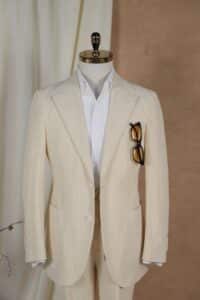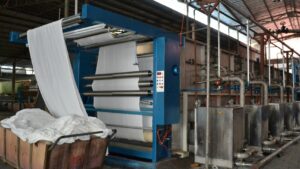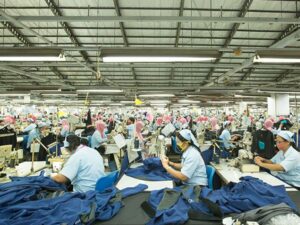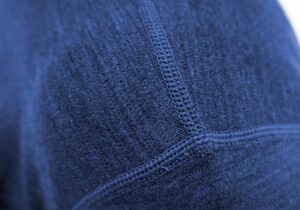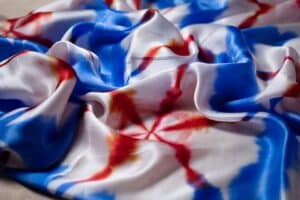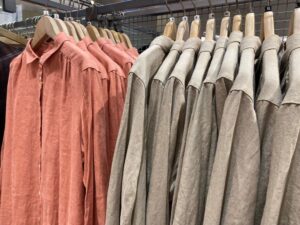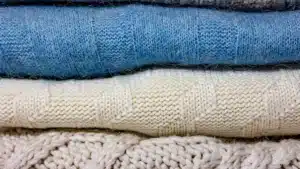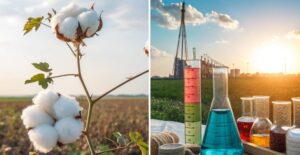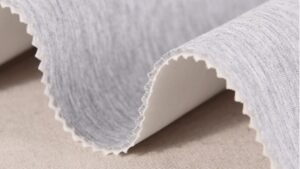
Acrylic fabric is a man-made material made from acrylic fibers. This fabric is known for being cheap and useful. It is used in clothes, home decorations, and other items. It feels soft, lasts long, and looks like real wool, making it popular in textiles.
In Chinese, we call Acrylic as 亚克力(yà kè lì) that is just the transliteration of Acrylic. We usually call Acrylic fabric as 亚克力布料(yà kè lì bù liào) or 腈纶布料(jīng lún bù liào).
Key Takeaways
Acrylic fabric feels soft, is light, and looks like wool. It is great for warm clothes like sweaters and scarves.
This fabric lasts long and does not fade, wrinkle, or grow mildew. It is easy to clean and stays in good shape.
Acrylic can be used for clothes, home items, and industry. However, people worry about its effect on the environment.
Key Properties of Acrylic Fabric

Acrylic fabric is special because of its unique features. These features make it a favorite in the textile world. Below are the main reasons why acrylic fabric is useful and affordable.
Softness and Lightweight
Acrylic feels soft, like natural wool, and is comfy on skin. People call it "synthetic wool" because it’s fluffy and cozy. Even though it’s soft, it’s also light, so it’s easy to wear. This makes it great for clothes and accessories that need warmth but not heaviness. Its soft texture works well for sweaters, scarves, and blankets, giving a snug fit.
Durability and Resistance
Acrylic fabric is made to last a long time. It doesn’t wear out easily and keeps its shape and color after many washes. It also resists fading, mildew, and chemicals, so it’s good for outdoor or damp places. For example, its strength ranges from 1,500 to 2,500 N/5 cm, making it strong for tough uses. Whether for clothes or industrial needs, acrylic stays durable and reliable.
Moisture and Wrinkle Resistance
Acrylic doesn’t soak up water, so it dries fast after washing. It also doesn’t wrinkle much, so you don’t need to iron it often. Studies show acrylic yarn handles moisture well, making it great for daily clothes and home items. This feature saves time and effort in care.
Heat Retention
Acrylic keeps you warm in cold weather. It traps heat well, making it perfect for winter clothes like sweaters, gloves, and hats. Even though it’s lightweight, it holds warmth, keeping you cozy in chilly weather. This makes it a good choice for outdoor gear and blankets for cold conditions.
How Acrylic Fabric Is Made
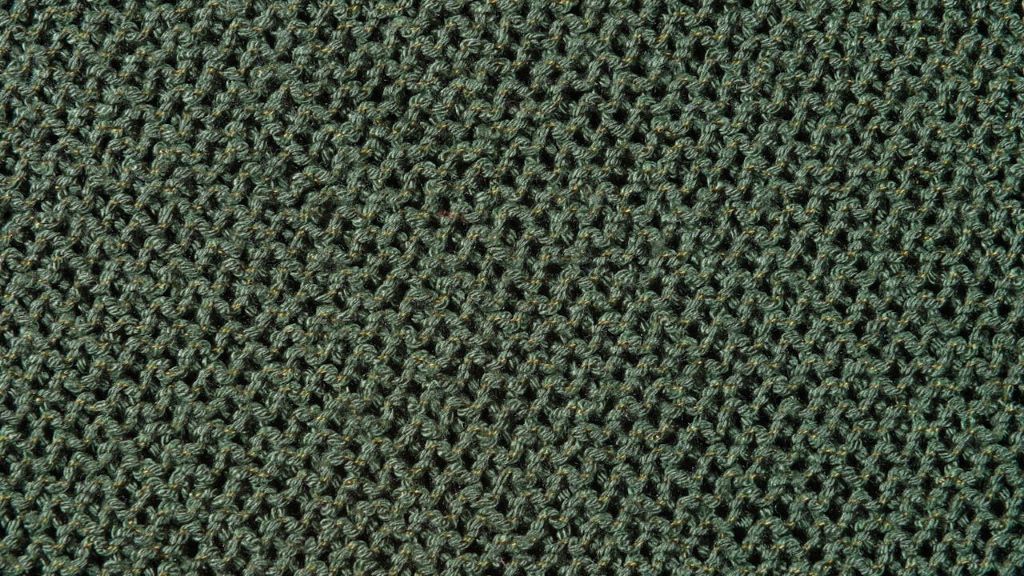
Learning how acrylic fabric is made shows why it’s special. The process has many steps, starting with making the base material and ending with final touches.
Making the Base Material
The first step is creating acrylonitrile polymer, also called polyacrylonitrile. This polymer is mixed in water using a chemical reaction called polymerization. This creates a thick, gel-like material, which is the base for acrylic fibers.
Turning Gel into Fibers
After the polymer is ready, it’s turned into fibers. Here’s how it works:
The gel is pushed through a tool with tiny holes, called a spinneret.
Fibers are hardened using wet or dry spinning methods.
The fibers are cleaned to remove any leftover chemicals.
Stretching and crimping make the fibers strong and textured.
Long strands are made for weaving or sold as yarn.
This step makes sure the fibers are strong and ready to use.
Adding Color and Final Touches
Next, the fibers are dyed to get bright colors. Chemicals are added to improve the fabric, like making it fire-resistant. These final steps make acrylic fabric useful for clothes, home items, and other products.
By knowing these steps, you can see how raw materials turn into soft, strong acrylic fabric used every day.
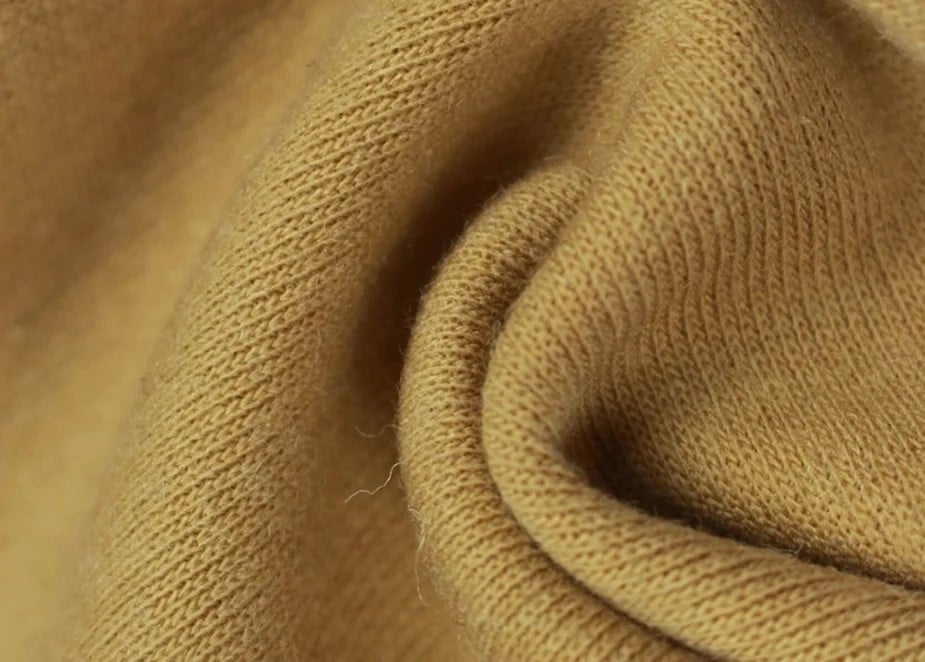
Types of Acrylic Fabric
Acrylic fabric comes in various types for different purposes. Knowing these types helps you pick the best one.
Regular Acrylic
Regular acrylic is the most popular kind of acrylic fabric. It’s soft, colorful, and lasts a long time. This fabric resists UV rays, so it’s great for outdoor use. It keeps its color even in sunlight, staying bright for years. Compared to polyester, it’s easier to clean and holds color better. However, it costs a bit more than polyester.
Feature | Acrylic Fabric | Polyester Fabric |
|---|---|---|
UV Resistance | Very high | Medium |
Colorfastness | Excellent | Medium |
Cleanability | Very good | Medium |
Abrasion Resistance | Medium | High |
Cost | Higher | Cheaper |
Ideal Use | Long-lasting outdoor items | Budget-friendly projects |
If you need fabric that stays bright and strong outdoors, choose regular acrylic.
Modacrylic
Modacrylic is a special type of acrylic fabric. It doesn’t catch fire easily and is very tough. This makes it great for safety gear, wigs, and furniture covers. It also resists heat and chemicals, so it’s useful for industrial jobs. While it’s like regular acrylic, its safety features make it unique.
High-Bulk Acrylic
High-bulk acrylic is made to be warm and cozy. The fibers are processed to make them thick and fluffy. This fabric keeps heat well, so it’s perfect for winter clothes and blankets. Its heat-holding ability is as good as traditional insulation materials. Plus, it can be made from recycled fabrics, making it eco-friendly and affordable.
If you want fabric that’s warm, soft, and good for the planet, high-bulk acrylic is a great pick.
Common Uses of Acrylic Fabric
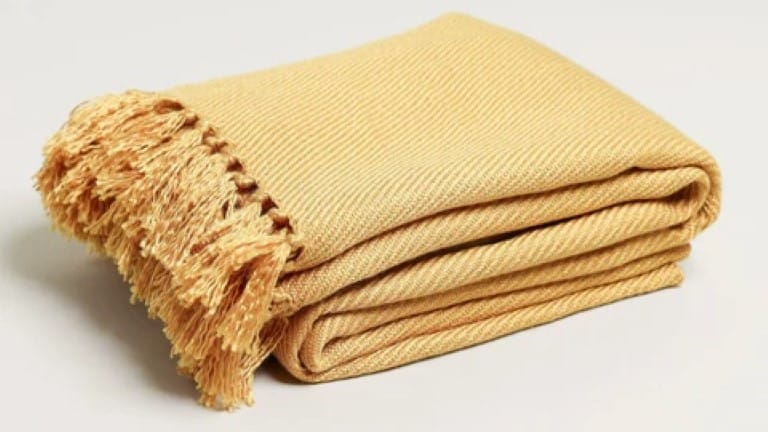
Acrylic fabric is useful in many industries. Its special features make it great for clothes, home items, work uses, and crafts.
Clothing and Apparel
Acrylic is important in making clothes. It’s used in sweaters, scarves, and gloves because it’s soft and warm. It looks like wool but is lighter, making it perfect for winter wear. Acrylic mixes well with wool and cotton, making it stronger and easier to clean. This mix makes clothes last longer and simple to care for.
Home Décor
Acrylic is popular for home items like blankets, curtains, and furniture covers. Its bright colors don’t fade, so it keeps rooms lively. It also resists moisture, staying fresh in damp places. Acrylic is tough, so furniture and decorations stay in good shape for years. Whether redecorating or adding comfort, acrylic is stylish and practical.
Industrial Applications
Acrylic is strong and flexible, making it great for work uses. It doesn’t stain, scratch, or bend easily, with a strength of about 14,000 psi. It’s used for furniture covers and protective screens at work. Its toughness makes it good for filters and building materials. Acrylic is easy to clean and comes in many colors, making it useful in many industries.
Crafting and DIY
Crafters love acrylic fabric for its low cost and bright colors. It’s great for DIY projects like custom clothes, home items, and art. You can make cool designs that last and look nice. It’s light and easy to work with, so you can try many ideas. Both hobbyists and pros enjoy using it for creative projects.
Pros and Cons of Acrylic Fabric
When choosing acrylic fabric, knowing its good and bad sides helps. Let’s look at the pros and cons to decide if it’s right for you.
Advantages
Acrylic fabric has many benefits. It feels soft and warm, like wool, but costs less. It’s light, making it easy to wear in clothes like sweaters and scarves. It doesn’t fade, keeping its bright colors even in sunlight. This makes it great for outdoor items like patio furniture covers.
Acrylic is also very strong. It lasts a long time without losing its shape or texture. It resists water, mildew, and wrinkles, so it’s easy to care for. It dries fast after washing, saving you time. It can also mix with other fibers, making products stronger and more useful.
Disadvantages
Acrylic fabric has some downsides too. It’s not great for the environment because it doesn’t break down easily. This means it adds to waste. It’s also less breathable than natural fabrics, which can feel hot in warm weather. Over time, it might pill, especially with heavy use.
Another problem is that regular acrylic burns easily. Modacrylic is safer, but regular acrylic isn’t good near heat. This limits where it can be used. Also, making acrylic involves chemicals, which might worry eco-friendly buyers.
By thinking about these pros and cons, you can decide if acrylic fabric fits your needs and values.
Caring for Acrylic Fabric
Taking care of acrylic fabric keeps it looking great. Follow these tips to keep it soft, strong, and colorful.
Washing Tips
Acrylic fabric is simple to clean if done right. First, brush off dirt with a soft brush or vacuum it. For spills, mix ¼ cup of mild soap, ⅓ cup of vinegar, and a gallon of water. Use this mix to gently clean the spot. For greasy stains, sprinkle cornstarch to soak up oil before cleaning.
If washing by hand, soak the fabric in warm water with mild soap for 10 minutes. For machine washing, treat stains first, use cold water, and pick the delicate cycle. Always let the fabric air-dry to keep it in good shape.
Drying and Ironing
Dry acrylic fabric on low heat to avoid damage. High heat can ruin the fibers or cause wrinkles to stay. Take clothes out of the dryer while still damp and let them air-dry. If ironing is needed, use a low setting and place a cloth over the fabric to stop melting.
Storage Guidelines
Store acrylic fabric the right way to avoid harm. Use breathable bags to keep moisture out. Place items in a cool, dry spot away from sunlight. For long-term storage, use UV-coated covers to block light damage. These covers are lighter and safer than glass, protecting your fabric better.
Environmental Impact of Acrylic Fabric
Problems with Sustainability
Acrylic fabric harms the environment in many ways. Making acrylic uses a lot of energy and chemicals, causing pollution. When thrown away, it doesn’t break down, adding to trash problems. Every year, the world creates 92 million tons of textile waste. About 87% of this waste ends up in landfills or is burned. Only 1% of old clothes are recycled into new ones. This shows how hard it is to handle acrylic waste properly.
Acrylic also adds to microplastic pollution. Around 500,000 tons of tiny fibers from synthetic fabrics, like acrylic, enter oceans yearly. These fibers make up 9% of all ocean microplastic pollution. The clothing and shoe industry also causes 8% of global greenhouse gas emissions. This shows why better, eco-friendly practices are needed. Below is a table with key facts:
Statistic | Value |
|---|---|
Global textile waste produced annually | 92 million tons |
Materials ending in incinerators or landfills | 87% |
Microfibers released into oceans annually | 500,000 tons |
Contribution to ocean microplastic pollution | 9% |
Greenhouse gas emissions from garment industry | 8% |
Better Options
There are greener choices instead of acrylic fabric. Vegan wool, made from plants, is biodegradable and eco-friendly. It uses natural dyes and skips harmful chemicals. This saves water and cuts pollution.
Recycled fabrics are another good choice. They turn waste into new materials, reducing the need for new resources. Organic cotton and hemp are also great options. They break down naturally, use fewer resources, and have a smaller carbon footprint than acrylic. Picking these fabrics helps create a cleaner, greener textile industry.
Acrylic fabric is soft, strong, and budget-friendly. It works well for clothes, home items, and more. It’s warm, light, and simple to clean, making it useful every day. But, its effect on the environment needs attention. Knowing its features helps you pick the right acrylic products.
FAQ
How is acrylic fabric different from natural fabrics?
Acrylic fabric is man-made, light, and resists water. It feels like wool but lasts longer and costs less.
Can acrylic fabric be used for outdoor furniture?
Yes, it’s great for outdoor furniture. It doesn’t fade, handles sunlight, and stays strong in wet weather.
Is acrylic fabric okay for sensitive skin?
Most people can use acrylic fabric safely. But some might get irritated. Try it on a small spot first if your skin is sensitive.

